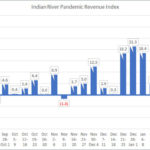If your distribution organization is considering revenue management or has already begun to dip its toes in the RGM waters, here are three ways to make the most of it.
1. Achieve profitability and revenue targets
Revenue management is how you can achieve profitability and revenue targets.
I often hear executives lamenting that they struggle to hit targets, from revenue to profit and even market share. Most organizations spend a lot of their time and resources pushing sales teams to grow while cutting costs to improve profitability. Think about the numbers of salespeople the average organization has. Now, consider how many people within your organization focus on RGM. Probably a handful, if that.
When correctly leveraged, the theory of revenue growth management has proven time and time again that it can provide sustainable revenue and profit growth. Why? Because RGM balances your team’s needs (sales, marketing, finance) and uses advanced statistical models to simulate impacts, allowing for a more accurate view of targets, ultimately driving results.
After all, a 1% increase in price appreciation can go a long way to the bottom line delivering an 8%-12% improvement on profitability.
2. Allow your team to create tangible impacts on the P&L
It can be hard to define success without a measuring stick. Financial statements have lengthy descriptions about the intangible or soft benefits of specific actions, albeit important, it is hard to show value to an organization with only these benefits.
Increasing a brand’s health score is an excellent achievement, but it is not clear how it impacts the profit and loss statement. What impact did that brand score health have on revenue or profitability? Quantification is tough because there are many moving pieces. The key drivers of RGM: increasing price, driving volume and rationalizing ineffective investment, all have clear and quantifiable impacts on revenue, profit and the P&L.
Teams can see a price change, trade decrease or volume gains right on the financial statement without having to do complicated math. The measurement is clear, tangible and digestible, which can lead to quicker decisions and positive behavior reinforcement.
3. See results and reap benefits
When you care about revenue management, you’ll see results and reap benefits. In my experience, I’ve come across a significant amount of special commercial projects within organizations that promise substantial returns. New product launches, customer acquisition strategies, and sales and distribution incentives are typical “go-to” tactics for many companies. However, these initiatives take a significant amount of time to resource, plan and implement, and all have varied success.
Deep dives into pricing and promotional effectiveness are usually functions of available data and analytical horsepower. Put more bluntly, math. Organizations can drive basic revenue growth management strategies within just a few weeks, starting to drive incremental revenue and profit quickly. The ability to swiftly capture dollars to the bottom line can prove vital in gaining your organization’s buy-in and help justify actions.
Related Posts
-
By including costs, revenue management can balance profit, and by including ancillary revenue streams it…
-
Indian River Consulting Group’s (IRCG) weekly Pandemic Revenue Index for the work week of Feb.…
-
Fortive posted a second-quarter profit of close to $181 million compared to $130 million in…




